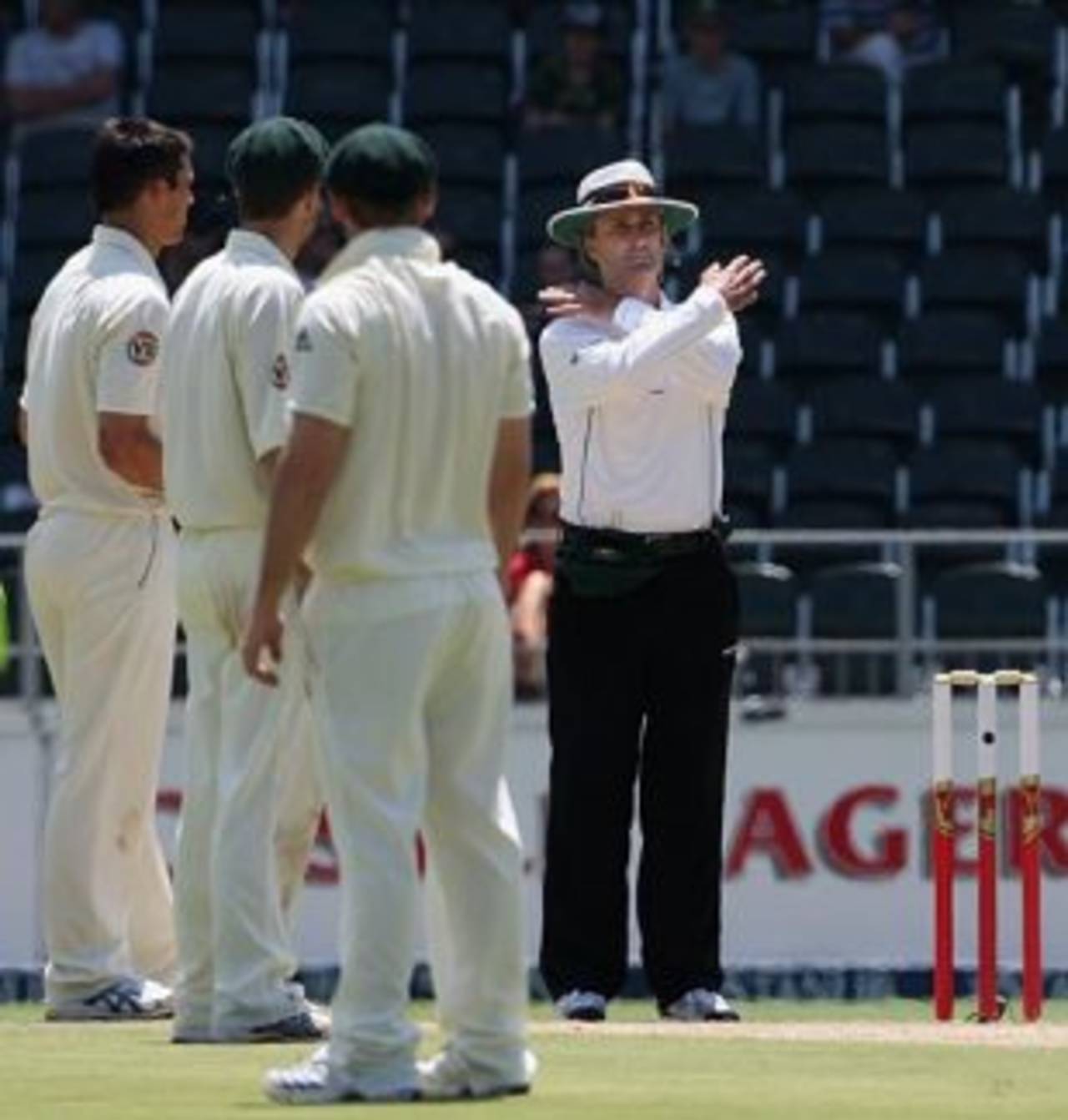Bugs in the machine
A look at why the umpiring referrals system is flawed
29-Mar-2009

The umpire is not always right, but nor is the referral system foolproof • Getty Images
So much for the adage, "the umpire is always right". The referral system has put
paid to that theory.
The referral system is being trialled in an attempt to ensure the correct decision
is reached, but it's been shown to have more flaws than the Empire State building. The fact that the maximum number of unsuccessful referrals was reduced from
three to two is an indicator of why it's better not to conduct trials at the highest
level of the game. Doing it in a Test match led to an embarrassing situation in
Durban.
Phillip Hughes attempted a sweep shot, took a single, and the umpire signalled a leg-bye. Graeme Smith promptly asked for an lbw referral and the replay showed Hughes
had edged the ball. Consequently Hughes couldn't be out lbw and South Africa had
wasted a referral because of an umpiring error, leaving Smith with only one
remaining challenge and Australia no wickets down.
If Smith had stated before the series that he preferred not to play under a system
being trialled at Test level, he would've been justified in refusing to bowl the
next ball until the umpire-induced wasted referral had been reinstated.
Unfortunately that's just one of many problems with the referral system.
There are far too many marginal lbw decisions being challenged. The standing umpire
is in the best position to decide lbw decisions, not a camera perched on high, 100 metres from the action.
Fifty-fifty decisions don't cause on-field acrimony or affect results, because
everyone accepts them and gets on with the game. As New Zealand captain Daniel
Vettori said after first experiencing the referral system, "It should only be used
to correct blatant mistakes."
Then there's the technology itself. The "mat" that's used to decide whether a ball has pitched in line with the stumps can accidentally move out of alignment and therefore should only be an entertainment tool for television, not something that decides a batsman's fate.
In the South Africa series Hot Spot was not available in the first Test because
the television company didn't want to pay for the rights. They then had a change of
heart and purchased Hot Spot for the final two Tests. That meant a series that
was already being played under a different set of laws from the one running
concurrently in the Caribbean, was suddenly being conducted under laws that changed
between the first and the final two Tests. Not only does that make a mockery of Test
statistics, it also devalues the game.
As good as Hot Spot is, it's not foolproof. For instance, a suspected inside edge in
Durban was hidden from view by the batsman's follow-through. This just adds to the
feeling of "justice for some but not for all" that the referral system creates.
There are far too many marginal lbw decisions being challenged. The standing umpire is in the best position to decide lbw decisions, not a camera perched on high, 100 metres from the action
This brings us to the matter of who is responsible for the technology used to assist
umpires in making their decisions? It's cricket's job to ensure the technology is on
site, and if the cost of it is to be in the television-rights package, then so be it.
If cricket is determined to have on-field decisions reversed by off-field
evidence, then the third umpire must be made aware of the pitfalls in making such
judgments off video. I know of two television producers with a long history in
the business who believe it's more important the third umpire has a full understanding of video rather than the laws of the game.
If cricket must have a challenge system, it would be better it came from the video
umpire noting a blatant error and reporting it to the arbiter on the field. This
will eradicate challenges over marginal decisions and also provide a system that
doesn't encourage captains and players to dispute umpire's decisions.
Another reason given for the introduction of the referral system was to relieve the
pressure on the standing umpires and reduce criticism of their performance. Unfortunately what it has done is highlight the inadequacies of the less competent
umpires, confirming my opinion that increased scrutiny only puts pressure on the
less talented officials.
The ICC's objective is fine - trying to reach the correct decision. However, it
would be better achieved by a combination of improving the umpiring standard and
sensibly utilising reliable technology. By taking this approach there's more
likelihood fans will at least consider that the umpire is always right.